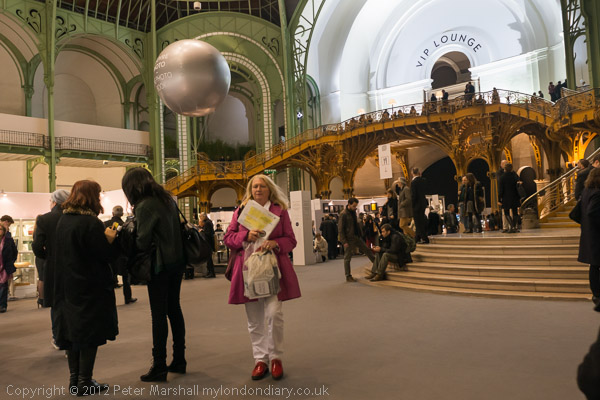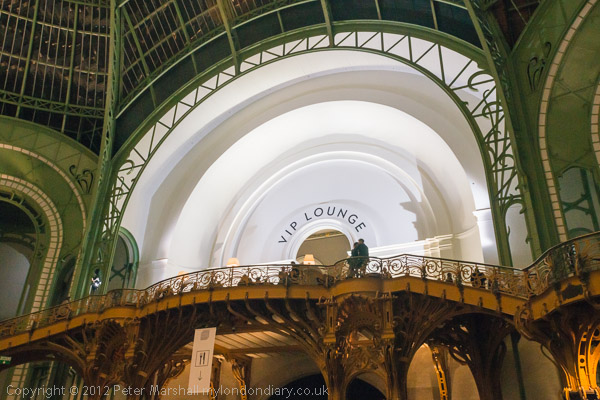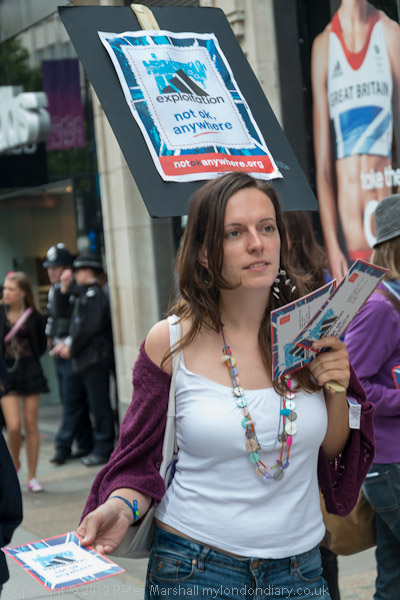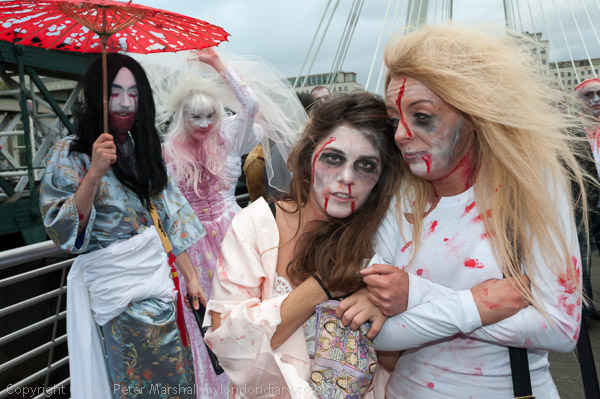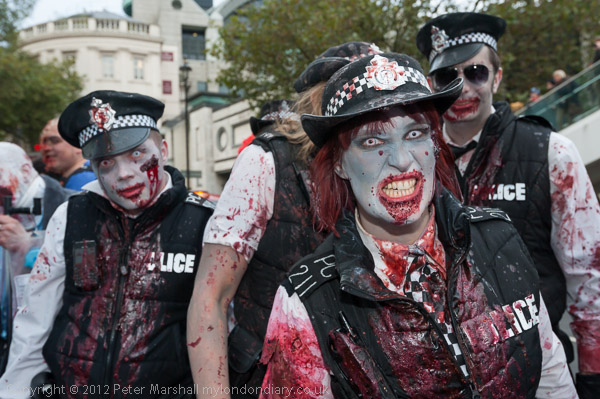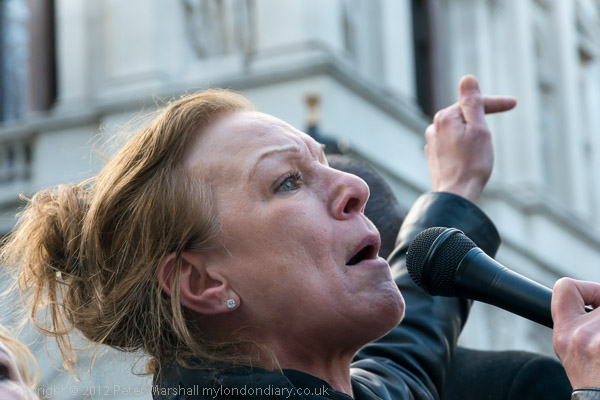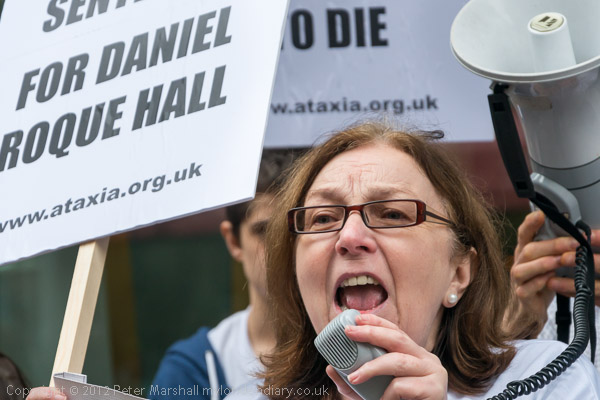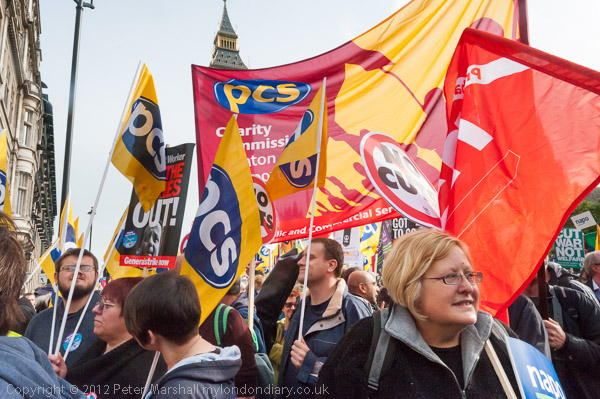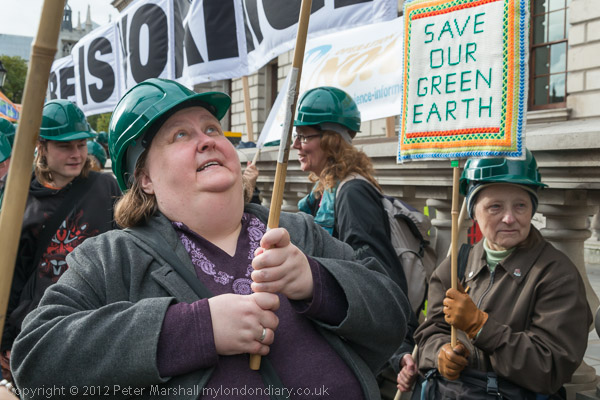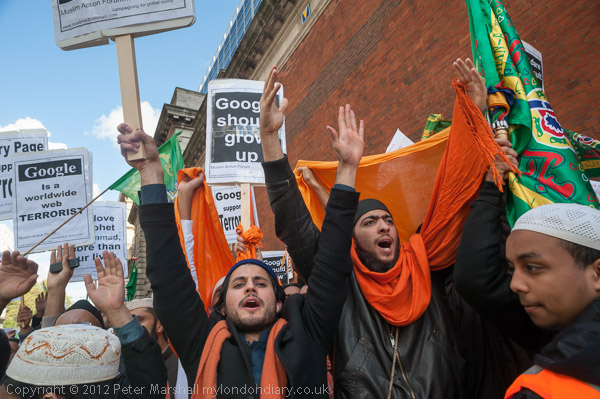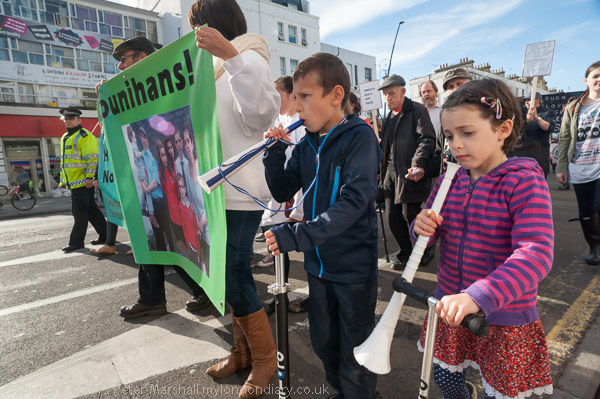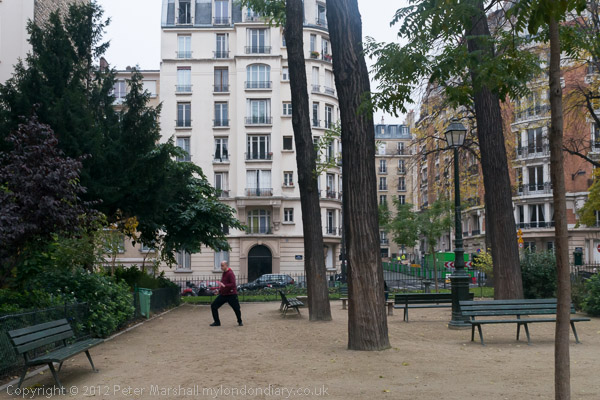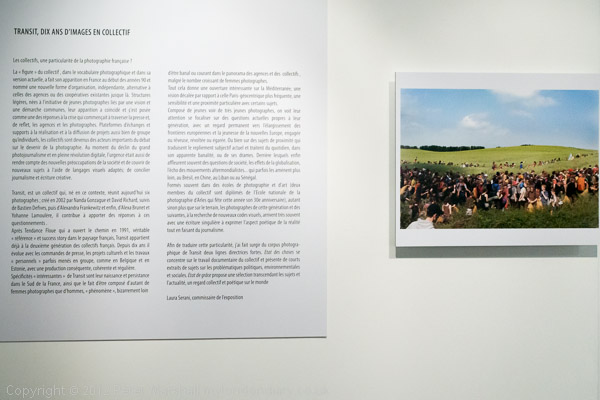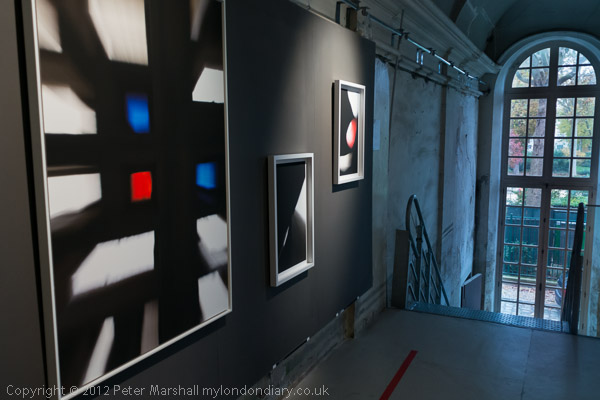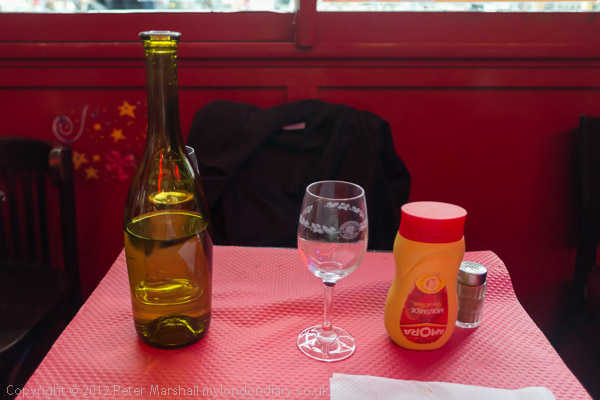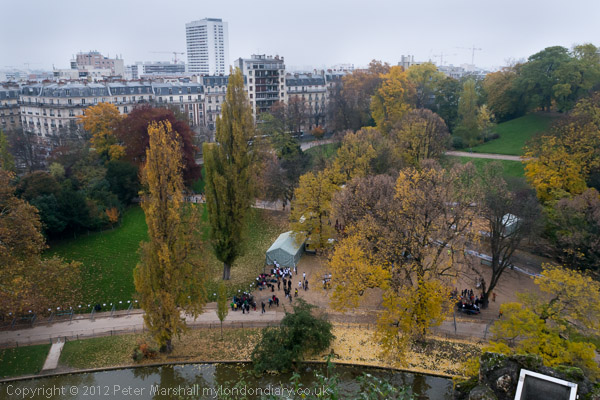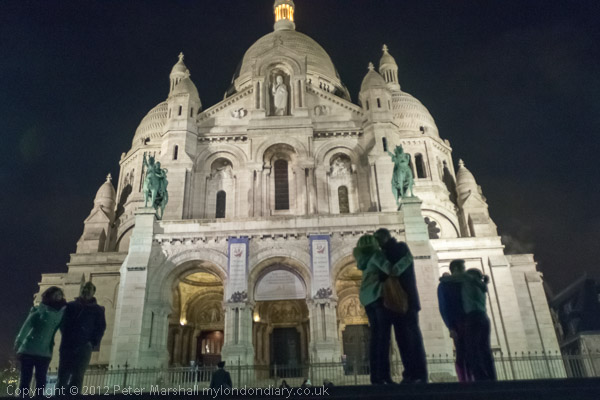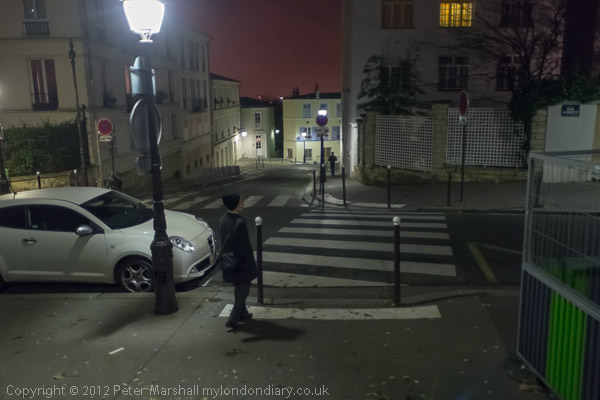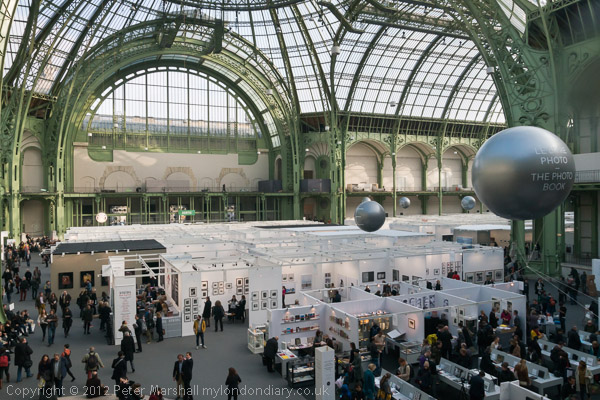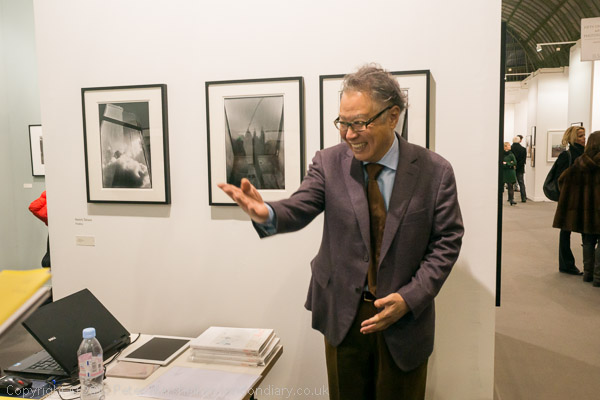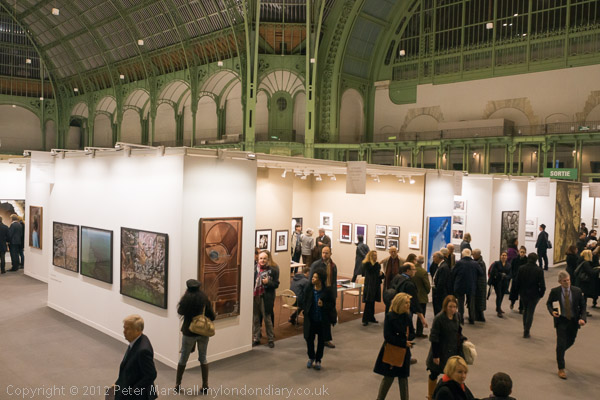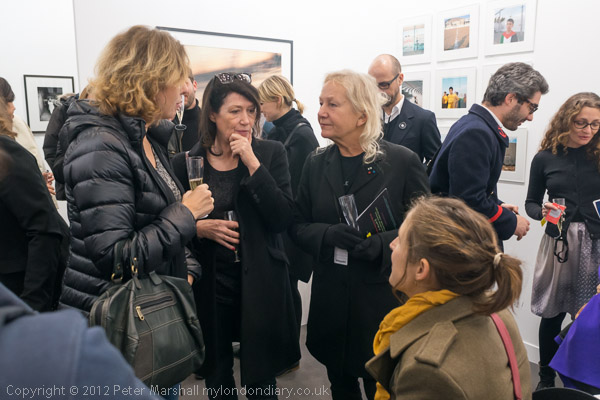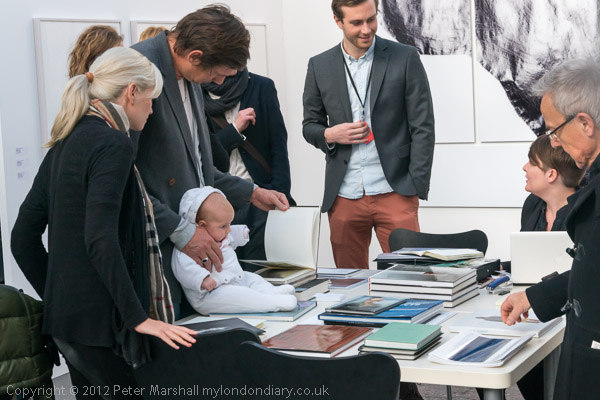Paris Photo doesn’t open until noon, so I had the morning to see some shows outside before returning to continue my work inside there. I suppose the kind of people who buy photographs don’t like to get up too early – or perhaps there is some other reason for them keeping the hours they do. I suppose it does mean some people will come on there after work as it stays open until mid-evening.
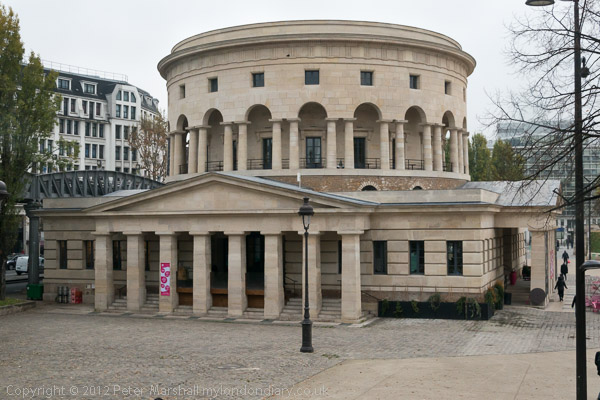
It was raining slightly and rather cold as we left our hotel and walked to the Place de la Bataille-de-Stalingrad, where I’ve previously been many times to admire one of Paris’s great buildings, the Rotonde de la Villette, a classical cylinder designed by Claude Nicolas Ledoux and built shortly before the Revolution as the offices for the tax collectors and guards who took the taxes on goods entering Paris. Now it’s been renovated and La Rotonde is a restaurant, but I’d not come here to eat but to see a Magnum show that was about to finish which was on the open area between it and the Bassin de la Villete.
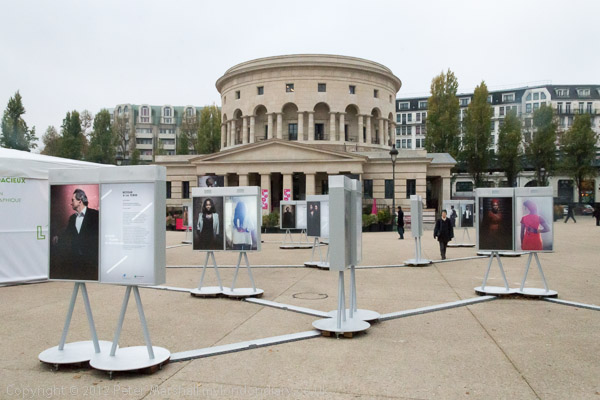
Surrounding a large closed tent were a number of double-sided stands, linked to the tent by a like the tentacles of an over-legged octopus. Each of the 36 carried a series of pictures of a young entrepreneur, the founder of a micro-enterprise, and they incorporated loudspeakers which told you their story. The photographs, as you would expect from Alex Majoli and Jonas Bendiksen, were competent, but this was largely good commercial work than portraiture with more depth. I listened to a couple of the stories, then left Linda listening and walked around the area taking more pictures.
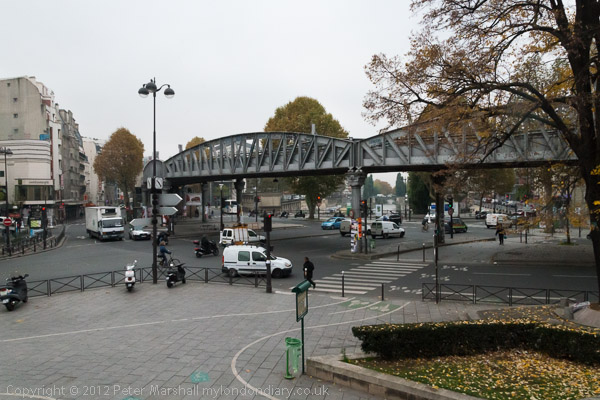
The area has been tidied up a lot in recent years, and what was once a slightly disreputable place is has gone up considerably in the world, although with many of the old canal-side buildings having gone and new modern offices and other buildings having sprung up it is rather less interesting. Some find the métro aérien whose viaduct goes across the square ugly, but it is certainly truly Parisian, and I rather admire its heavy nineteenth century ironwork.
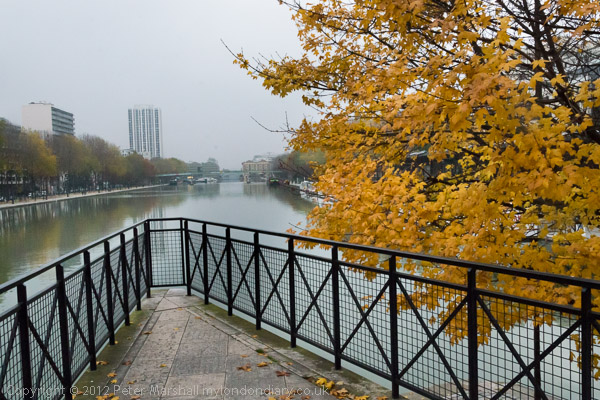
The trees are covered with bright yellow leaves – its the time of year when once I used to hide the colour film and work only in black and white, there are only so many autumn images I ever want to take – and I indulge myself a little, before turning back to the austere pavilion.
Eventually Linda has listened to enough of the stories and we leave, walking south down beside the Canal St Martin, past a couple of locks to one of my favourite Paris views – I have a salt print I made years ago hanging in my living room (I don’t quite go back to the Fox Talbot era, but got interested in trying out the historic processes including salt printing, platinum, gum bichromate, cyanotype and more that I had to mention in the history course I taught.) I like to go back there and see how it has changed and also try to make some slightly different views.
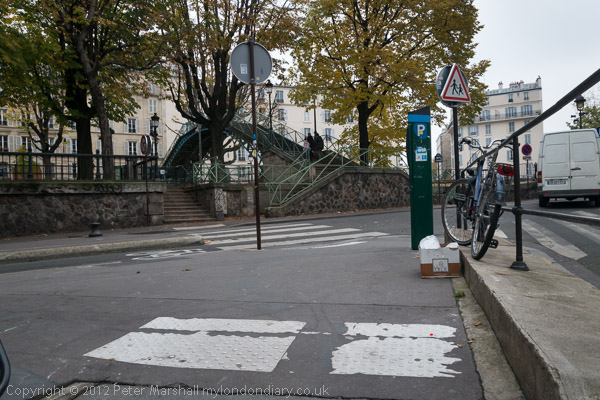
Rue Bichat/Quai de Jemmapes, Paris 10e, 2012
At this point I lost Linda who had gone to look at the park opposite while I was taking pictures, and I found I couldn’t get a signal to phone her. Eventually I saw her in the distance and we met up, but by now it was rather later than I’d expected, and we walked quickly down to the Place de la République, close to which were several galleries which were open from 11am. I’d written down the address of the first with the wrong street number, which made it hard to find, but being Paris, we found two other galleries with unlisted shows first, which were actually slightly more interesting.
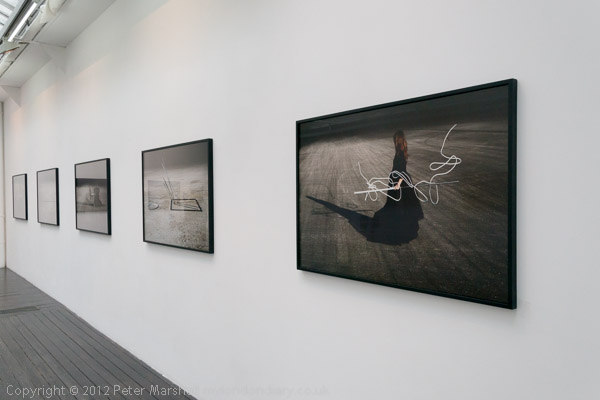
Our next stop was one of Paris’s nicer galleries, la galerie Les Filles-du-Calvaire which was showing Corinne Mercadier‘s Devant un champ obscur. The lower floor (above) had a series of large colour prints of scenes taken in what seemed to be an empty and deserted building, all of which had been inverted to a negative.
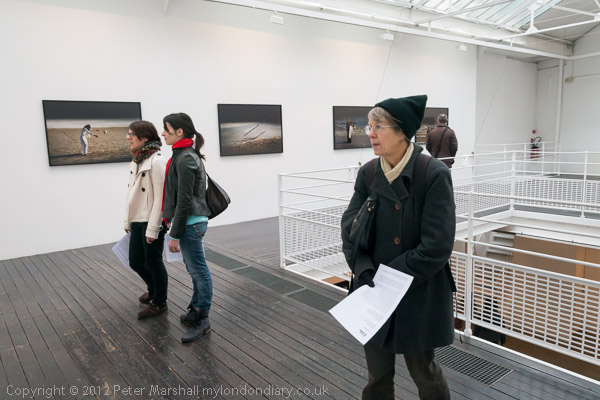
On the upper floor were staged images, some involving people with blocks or balls. it wasn’t really my sort of work. There is what seems to be a full set of the images on the gallery site, and if like me you are curious about the negative images you can copy them and drop them into Photoshop and then invert them (Ctrl+I). Of course I wouldn’t dream of posting Mercardier’s images treated in that way here, but here’s a more or less random image from my own collection (actually a crop from a panorama I was working with yesterday) treated in the same way. The clouds certainly gain in menace.


Gravesend, 2000
I know of photographers who always scan their transparencies as negatives and then invert them, claiming that with their software and hardware they get better results, though I’ve never found that to be the case. But certainly the negative world is a rather strange case as many photographers know, and back in the days when we all used black and white film we got quite adept at mentally flipping negatives to visualise the positive they would print. Colour negatives added a different dimension (and an orange mask) that made this – at least for me – largely impossible.
The first negative prints in the world of photography of course date from before W H F Talbot, who produced them in camera in the 1830s as ‘photogenic drawings’ (and a little later as calotype negatives), to the cameraless experiments of Wedgewood and others, and at Paris Photo there were a few examples of prints from the earliest photographically illustrated book, the splendid Photographs of British Algae: Cyanotype Impressions by Anna Atkins which she started to publish in 1843.
Mercadier’s large negative images were made from much more subdued subject matter than my trivial example, and the large expanses of white wall in the deserted building result in very dark images, powerfully so. They had a presence that I found lacking in the dream-like staging in her works in the upper gallery, which to me bordered on the ridiculous, a kind of game-playing of ultimate insignificance, bolstered by the kind of philosophical statements which the French education system glorifies and inducts.
It was time for an early lunch, taken in a brasserie full of Parisians, many noisily celebrating the arrival of the Beaujolais Nouveau, a triumph of advertising over common sense and taste. I had to work in the afternoon and stuck to a single glass of beer with my extremely tasty plat du jour, Beef bourguignon with some deliciously cooked pastry wrapped potatoes and bread, though a red, but certainly not Beaujolais Nouveau, would have been even more appropriate.
